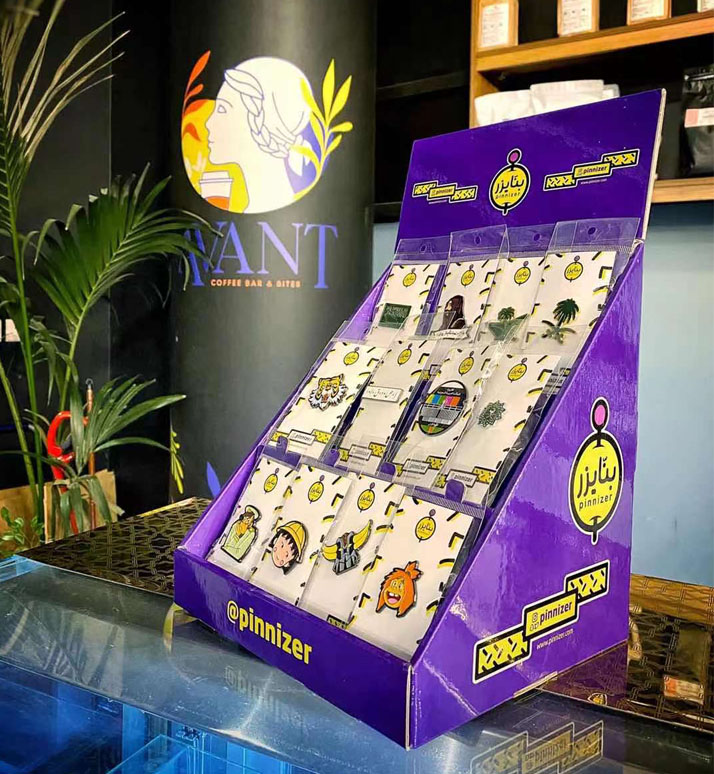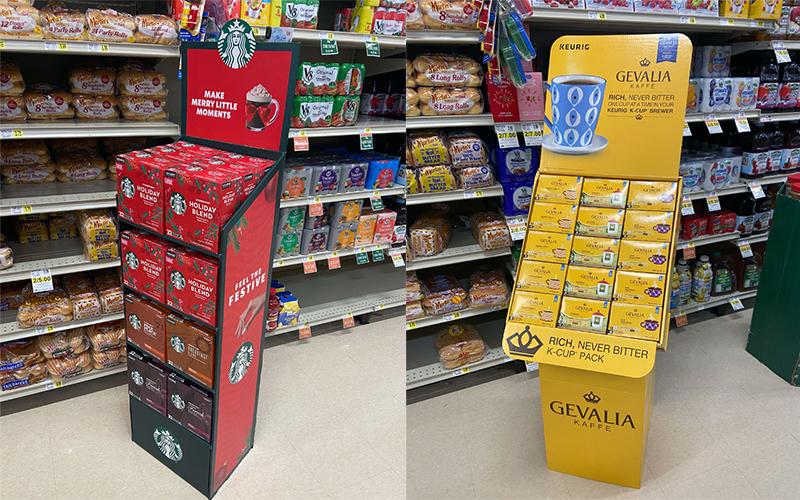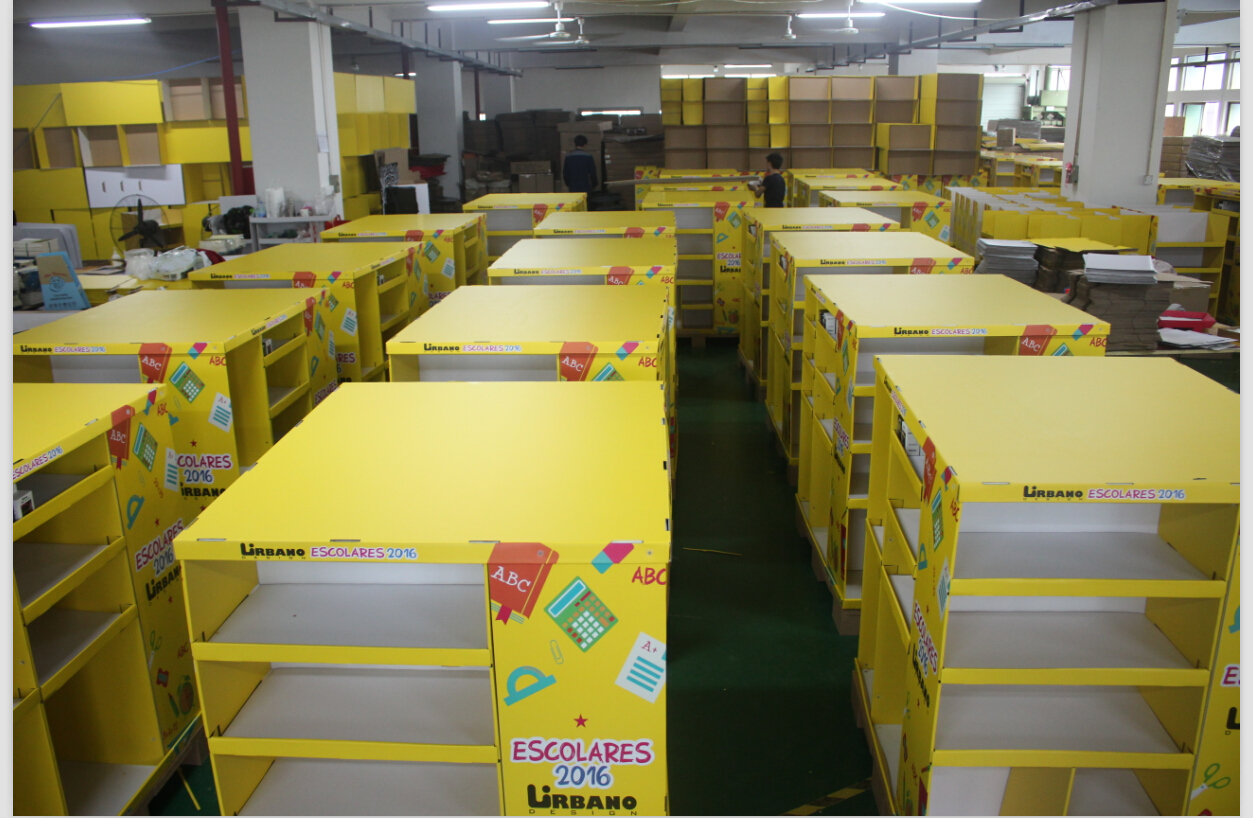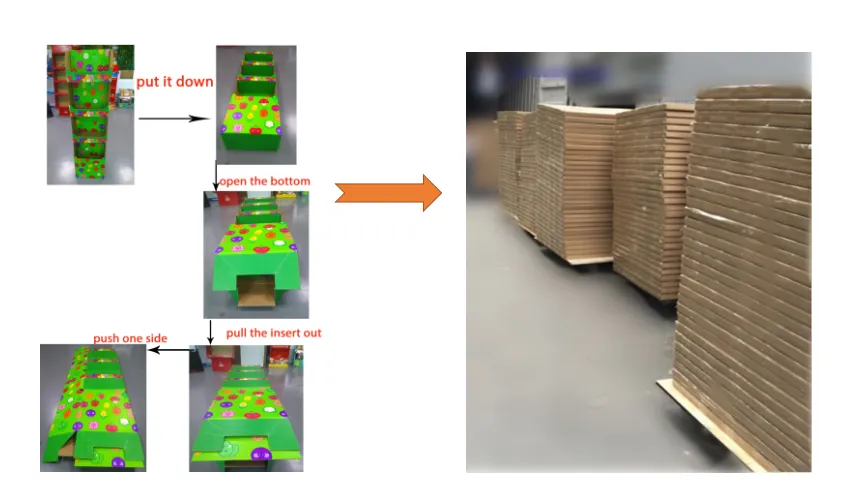Worried your custom display order won't meet your standards? Poor quality can damage your brand's reputation. A solid quality control process is the key to getting it right every time.
To ensure quality control for custom display orders, you need a multi-step process. This includes pre-production checks on materials and design, in-process inspections during manufacturing, and a final quality check of the finished products before they are shipped. Clear communication with your supplier is crucial.

For over 16 years, I've seen how important quality control is in the display industry. A great design on paper can turn into a disaster if the execution is poor. It’s not just about finding mistakes; it’s about preventing them from ever happening. The peace of mind that comes from knowing your product launch is in safe hands is priceless. This is why a systematic approach is non-negotiable for me and my team. Let’s explore how you can build this confidence into every order you place.
How do you ensure quality control?
Unsure how to start building a quality control system? Without a clear plan, mistakes slip through, costing you time and money. I use a specific, step-by-step method to guarantee quality for every project.
I ensure quality control by establishing clear standards from the start. This involves detailed communication with the client, rigorous material testing, constant monitoring during production, and a final inspection based on a comprehensive checklist. Every step is documented to ensure consistency and accountability for the displays.

Over the years, I've refined a process that breaks down quality control1 into manageable phases. It’s not a single action but a continuous effort throughout the project lifecycle. This structured approach helps designers like you feel confident that the final product will match your vision perfectly.
Phase 1: Pre-Production Approval
Before mass production begins, we lock in all the details. We start by creating a detailed specification sheet that covers everything from cardboard grade and flute type to ink colors and finishing. Then, we create a "white sample." This is an unprinted, structural prototype. The client assembles it to test the strength, fit, and function. Once the structure is approved, we move to a digitally printed sample. This lets the client see the final colors and graphics on the actual material. Only when both samples are signed off do we proceed.
Phase 2: In-Process Checks
Once production starts, our quality team is on the factory floor. The first unit that comes off the production line, known as the "first article," is meticulously compared against the approved printed sample. We check for color accuracy2, print registration3, and die-cutting precision4. Throughout the run, we conduct random checks. We pull units from the line to ensure consistency. This prevents a small issue from multiplying into thousands of flawed displays. Forgetting this step once cost me a whole batch early in my career, a lesson I never forgot.
Phase 3: Final Pre-Shipment Inspection
After all the displays are produced and assembled, we conduct a final quality check. We randomly select a statistically significant number of packed units and inspect them against a detailed checklist. We check everything: dimensions, print quality, structural integrity5, and even the quality of the packing cartons. We assemble a few units to make sure they go together as easily as the prototype did. This final check is our last line of defense to guarantee that what ships out is what the client approved.
What are the 4 types of quality control?
Feeling overwhelmed by all the different quality checks? Focusing on the wrong things can waste effort and still lead to poor results. Understanding the four main types helps you create a balanced and effective plan.
The four main types of quality control1 are pre-production inspection6 (checking raw materials), during production inspection7 (monitoring the process), pre-shipment inspection8 (checking finished goods), and container loading inspection9 (ensuring correct packing and shipping). Each step addresses quality at a different stage.

Thinking about quality control1 in these four stages helps organize the entire process. Each type has a specific purpose and addresses potential problems at the most logical time. For a product designer, knowing these stages exist helps you ask your manufacturing partner10 the right questions. It ensures that checks and balances are in place from the very beginning to the very end. Let's look at how each type applies directly to custom cardboard display11 orders.
| Quality Control Type | Purpose in Custom Display Production | Why It's Critical for Designers |
|---|---|---|
| Pre-Production Inspection (PPI) | Verify the quality of raw materials like cardboard stock, inks, and printing plates before production starts. | Ensures the foundational materials match your specifications. The wrong paper grade can compromise the entire display's strength and appearance. |
| During Production Inspection (DPI) | Monitor the manufacturing process to catch defects12 early. This includes checking color consistency, cutting accuracy, and gluing. | Catches deviations from your approved sample in real-time. This prevents an entire batch from being produced with the wrong color or a cutting flaw. |
| Pre-Shipment Inspection (PSI) | Conduct a final, thorough check on a random sample of finished and packed displays before they leave the factory. | Your last chance to confirm the order meets all quality standards13. It verifies that the final product is structurally sound, visually correct, and properly packed. |
| Container Loading Inspection (CLI) | Supervise the loading process to ensure cartons are handled carefully, stacked correctly, and the quantity matches the order. | Protects your investment from damage during transit and verifies you receive the correct number of units. Poor loading can ruin a perfect production run. |
How to keep quality control?
Is your quality control process inconsistent? One bad batch can undo all your hard work and damage client trust. Maintaining quality control requires ongoing effort and a commitment to clear systems.
To keep quality control1 consistent, create and use Standard Operating Procedures (SOPs)14 for every step. Train your team thoroughly, regularly review your processes, and maintain open communication with your clients. Documenting everything helps you track performance and make improvements over time.

Putting a quality control system in place is the first step, but making it last is the real challenge. Consistency is everything. In my experience, a quality mindset15 has to become part of the company culture, not just a department. It’s about building repeatable systems that don't rely on one person's memory. This ensures that every client receives the same high level of quality on every single order. Here’s how we make sure our quality control1 stays strong.
The Power of Checklists and SOPs
We live by Standard Operating Procedures (SOPs)14. For every stage of production, from receiving raw materials to packing the final product, there is a detailed checklist. This document lists every single quality point that needs to be verified. For a designer, this means your specific requirements for PMS colors, cardboard finish, and assembly instructions are translated into actionable checkpoints for our team. It removes guesswork and makes the quality process objective and repeatable, no matter who is performing the check.
Continuous Team Training
Quality is everyone's responsibility. We constantly train our production staff to be the first line of defense. An operator running a printing press or a die-cutter is trained to understand the final product's goals. They know what to look for and are empowered to stop the line if they spot an issue. This proactive approach saves a huge amount of time and materials compared to only catching defects at the final inspection stage.
The Client Feedback Loop
We view every project as a learning opportunity. We actively seek feedback from our clients after they receive their displays. If there's a problem, we don't just fix it for that one order. We analyze the root cause and update our SOPs and training to prevent it from happening again. This continuous improvement cycle, fueled by open communication, is essential for maintaining and elevating our quality standards13 over time.
What are the five responsibilities of quality control?
Who is actually responsible for quality in your supply chain? When everyone thinks someone else is handling it, mistakes are guaranteed to happen. Defining the key responsibilities makes sure nothing falls through the cracks.
The five key responsibilities of quality control are: setting clear quality standards, inspecting materials and processes against these standards, identifying and documenting defects, recommending corrective actions to prevent future issues, and preparing final quality reports for both internal teams and clients.

A quality control team16tps://gifts-pack.com/how-do-custom-packaging-companies-ensure-quality-and-reliability/)1 team or person has a very defined role. Their job isn't just to say "good" or "bad." They are the guardians of the client's expectations throughout the entire manufacturing journey. Understanding their core responsibilities helps a designer like you know what to expect from a good manufacturing partner10. It creates a framework for accountability and collaboration. Here are the five responsibilities we build our QC department around.
1. Setting and Clarifying Standards
The QC team’s first job is to take your design specifications and turn them into a clear, measurable quality standard. This involves working with you and our production team to confirm that your requirements for color, material strength, and dimensions are understood by everyone and are achievable in production.
2. Inspection and Testing
This is the hands-on part. Our QC staff physically inspects materials and products at every stage. They use tools to check color density, calipers to measure dimensions, and perform assembly tests to check for structural integrity5. Their job is to compare the real product to the standard set in step one.
3. Identifying and Documenting Defects
When a product fails to meet the standard, the QC team's responsibility is to identify the defect clearly. They don’t just reject it; they document it with photos, notes, and data. This creates an objective record of the issue, which is crucial for figuring out what went wrong.
4. Recommending Corrective Actions
A good QC team is a problem-solving team. After identifying a defect, they work with the production department to find the root cause. Was it a machine setting? A bad batch of ink? They recommend specific actions to fix the immediate problem and prevent it from recurring.
5. Reporting and Communicating
Finally, the QC team is responsible for communicating their findings. They provide detailed reports to our internal management and, most importantly, to you, the client. This transparency builds trust and gives you a clear picture of how your order is progressing, ensuring there are no surprises upon delivery.
Conclusion
Ensuring quality is a team effort. With clear communication and a structured process, you can get the custom displays you envisioned, protecting your brand and boosting your sales.
-
Understanding quality control is essential for ensuring product standards and client satisfaction. ↩ ↩ ↩ ↩ ↩ ↩
-
Learn techniques to maintain color accuracy throughout the production process. ↩
-
Understand the role of print registration in achieving high-quality printed materials. ↩
-
Discover how die-cutting precision affects the quality of custom displays. ↩
-
Explore the importance of structural integrity in ensuring product durability. ↩ ↩
-
Learn how pre-production inspection can prevent costly mistakes before manufacturing begins. ↩
-
Discover the importance of monitoring production to catch defects early and save resources. ↩
-
Find out how pre-shipment inspection ensures that products meet quality standards before delivery. ↩
-
Explore how container loading inspection protects your products during transit. ↩
-
Explore key factors to consider when selecting a manufacturing partner for quality assurance. ↩ ↩
-
Learn about the benefits and considerations of using custom cardboard displays in marketing. ↩
-
Learn effective methods for identifying and documenting defects in production. ↩
-
Explore the significance of setting clear quality standards for successful production. ↩ ↩
-
Learn how SOPs can streamline quality control processes and ensure consistency. ↩ ↩
-
Understand how fostering a quality mindset can enhance overall production quality. ↩
-
Understand the critical responsibilities of a quality control team in manufacturing. ↩






